Last year, Xiaomi picked up a niche of large size smartphones a.k.a phablets which eventually gained a success selling over 3 million devices in a span of a year since the launch of the Xiaomi Mi Max with 1.5 million units sold within the first two months. Xiaomi releases the second generation of its phablet series with a few upgrades. The upgrades aren’t fundamental, however, a few things have become better in the second generation Mi Max 2.
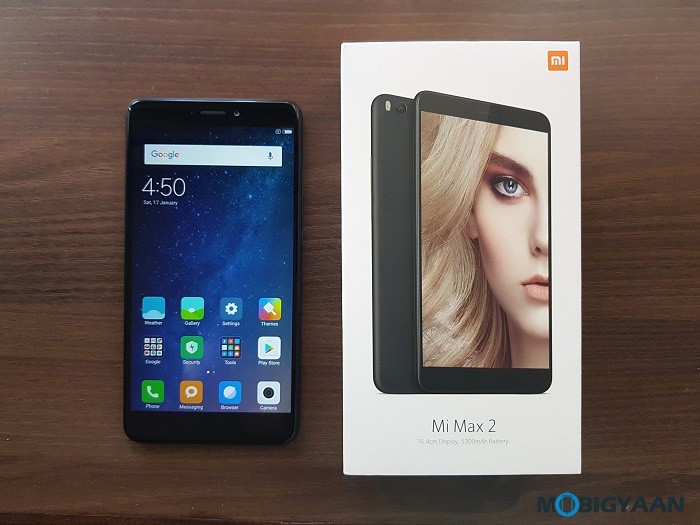
In the Box
- Xiaomi Mi Max 2 with built-in battery
- USB Type-C Cable
- Charger
- User Manuals & Warranty Card
- SIM Ejector Pin
Xiaomi Mi Max 2 Specifications
- Display: 6.44-inch Full HD IPS display (1920 x 1080 pixels), 2.5D curved glass on top
- Fingerprint Scanner: Yes, at the back
- Software: MIUI 8.5.4 based on Android 7.1.1 Nougat
- CPU: Up to 2.0 GHz octa-core Cortex-A53 processor, Qualcomm Snapdragon 625 SoC, 14nm FinFET
- GPU: Adreno 506
- Memory: 4 GB RAM, LPDDR3
- Storage: 64 GB internal storage, MicroSD up to 256 GB (Hybrid Slot)
- Main Camera: 12 MP f/2.2, IMX386, dual-tone LED flash, 4K video @30fps, slow motion 1080p @120fps
- Front Camera: 5 MP f/2.0, 1080p video @30fps
- Connectivity: USB Type-C, 3.5 mm stereo jack, Wi-Fi 802.11 a/b/g/n/ac, Bluetooth 4.2, NFC, GPS (A-GPS, GLONASS, BDS)
- Sensors: Accelerometer, Gyroscope, Proximity, Compass, Barometer
- Cellular: 4G LTE network, VoLTE-enabled
- Battery: 5,300 mAh (non-removable)
- Price: ₹16,999
Design, Build & Ergonomics
The Mi Max flaunts all-metal unibody with a huge 6.44-inch screen size ending up in the phablet category. Due to its rounded edges feels pleasing, but since the form factor is huge, it is not easy to hold with one hand and use. Xiaomi offers a one-handed mode and is recommended if you use it with one hand because it’s hard to reach your thumb on the other end of the screen.
There are people who prefer large display over a small one and this is where Xiaomi gains a plus one. Not everyone like a large display. There are only a few smartphones with large screen size, Lenovo’s Phab2 Plus smartphone being one of the competitors of Xiaomi Mi Max 2.
The antenna lines, placed on the top and bottom, are almost invisible. We received a Matte Black variant of the device and it looks amazing.
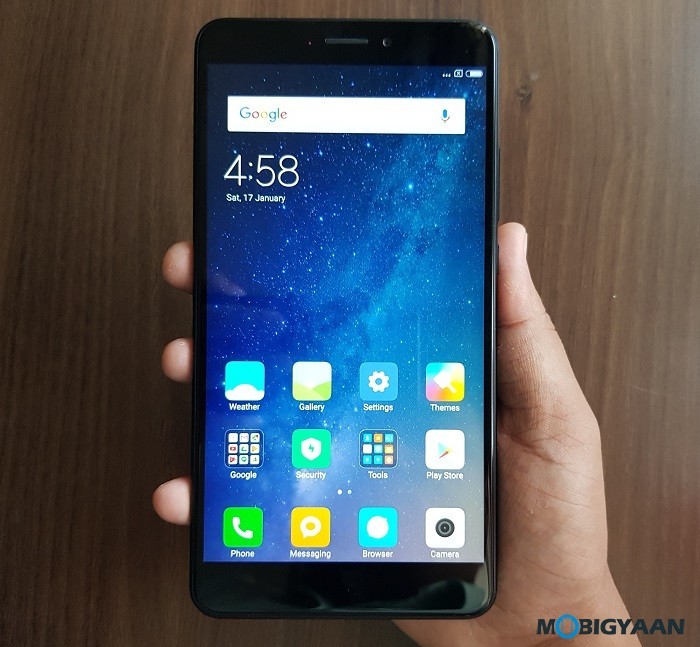
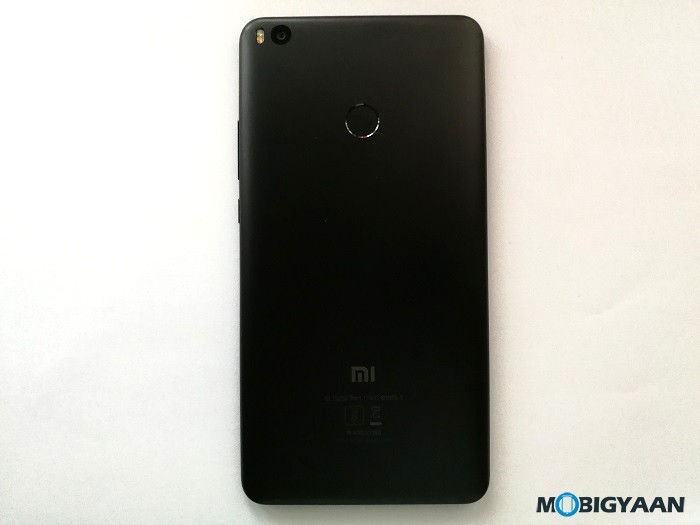
While the second generation has nothing significant upgrades if we talk about the internals, the battery and the camera are the key changes. The 5,300 mAh battery upgrade sounds off very well if you observe its predecessor comes with 4,850 mAh. Since the CPU is now power efficient, it will create more impact improving the overall battery life.
The bottom has backlit touch keys that aids navigation in the night, the fingerprint scanner at the back works really fast.
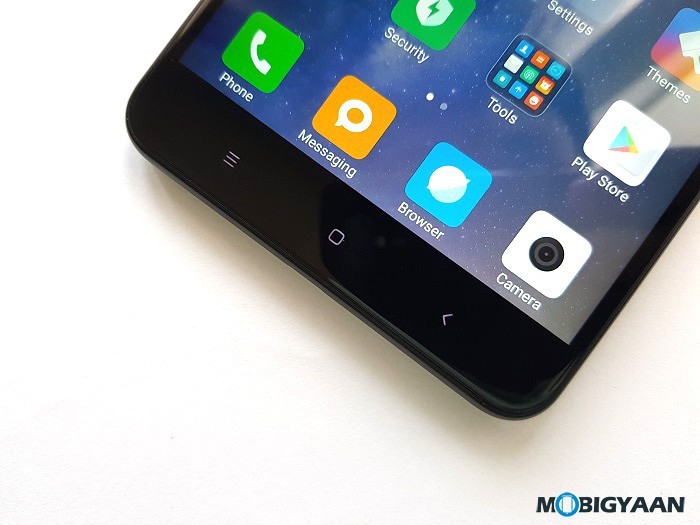
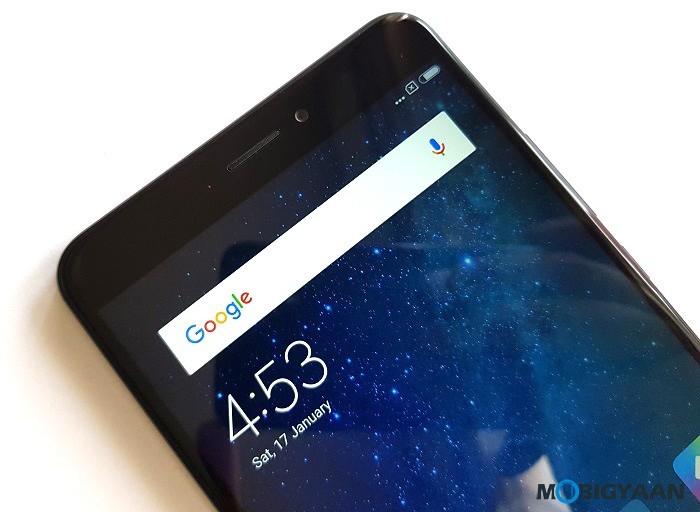
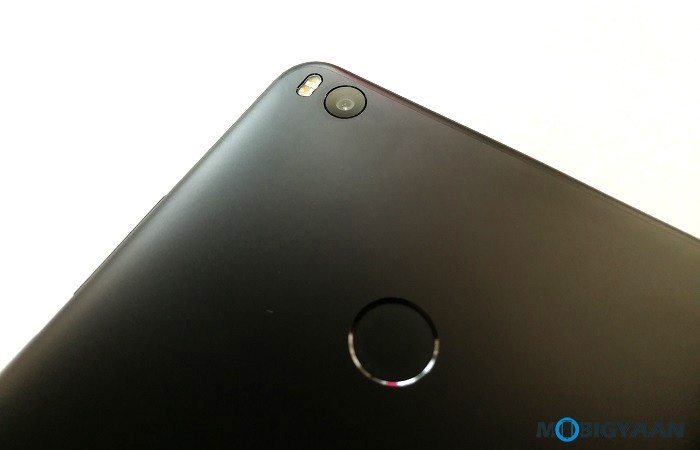
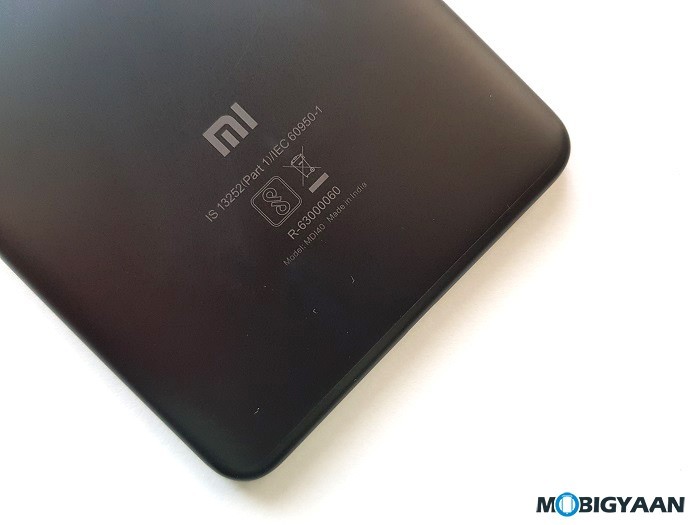
It carries two SIM cards, one nano SIM and one micro SIM with the option to place a MicroSD card on the SIM2 slot.
The IR Blaster is present on the top which is now moved to the center, the USB is now type-C, and the loudspeakers are now stereo. The second loudspeaker is actually the earpiece speaker that acts like a loudspeaker. What remains the same is the 3.5 mm port for earphones and the buttons placement.
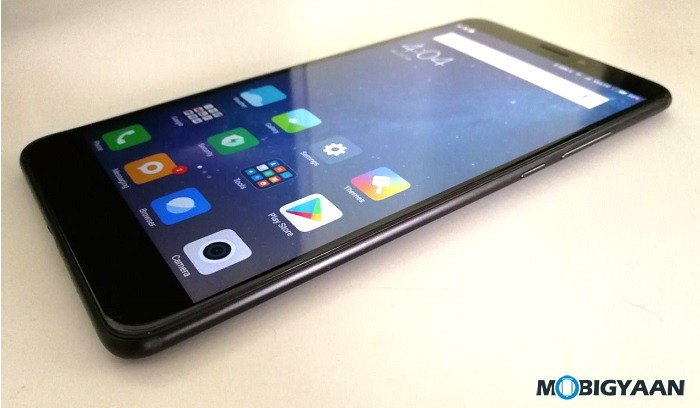
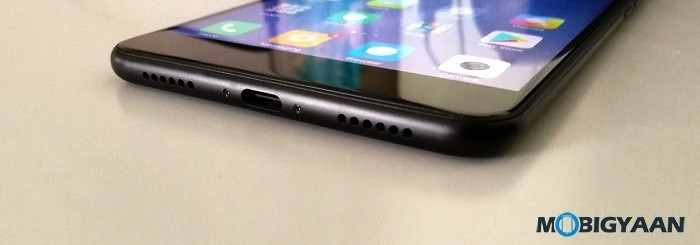
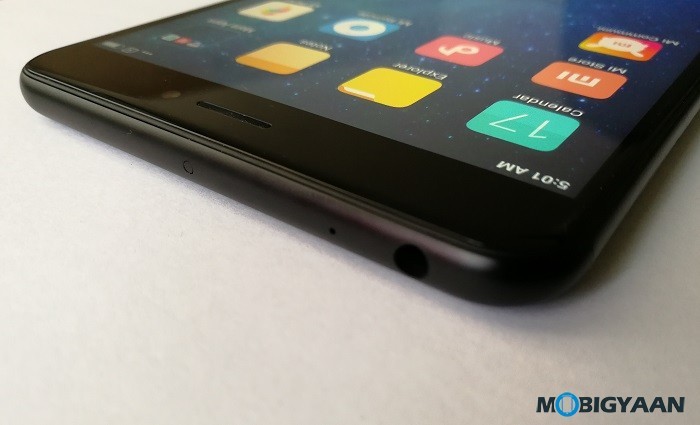
While the online availability remains to be Flipkart, Amazon India, TataCliq, and Mi.com/in, Xiaomi Mi Max 2 is also available at offline channels including stores like Chroma, Reliance Digital, eZone, Vijay Sales, Poorvika Mobile World, Big C, Sangeetha Mobiles, and LOT Mobiles. It will be available to buy starting from 27th July 2017.
Display
The phablet has an impressive screen diagonal, the large size is what matters when you want to enjoy content on the large screen. The screen is sized at 6.45-inch with a resolution of 1920 x 1080 and on to protected by a 2.5D Corning Gorilla Glass 4.
The display is not a problem for everyone, there is enough room for the content, however, the visibility is above average. The viewing angles are good, but with the slightest deviation, the color begins to distort and you can see the screen dim. This won’t be a problem for many unless you are aware of the AMOLEDs and other high-end displays.
Apart from the large screen size, the Mi Max comes with a built-in reading mode which turns the blue light filter On to protect the eyes. Other options you can find in the Display settings are the color temperature. It also utilizes the one-hand mode if you aren’t comfortable.
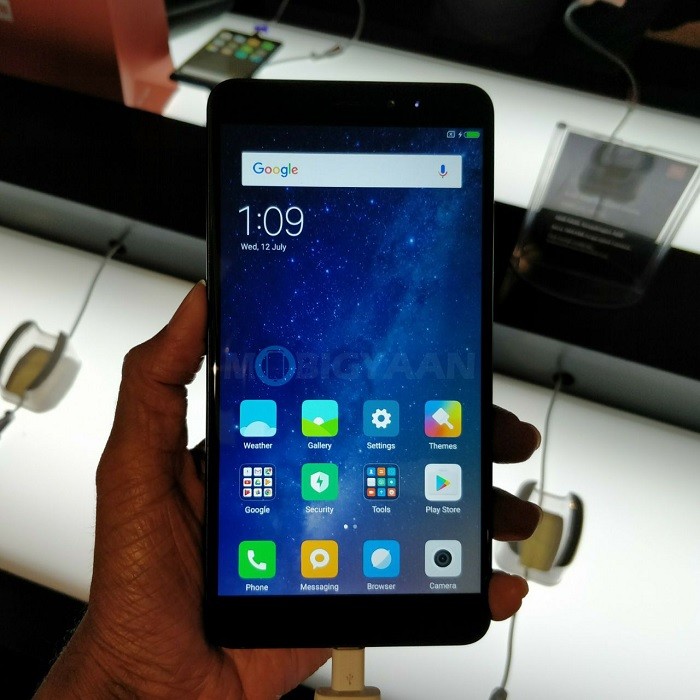
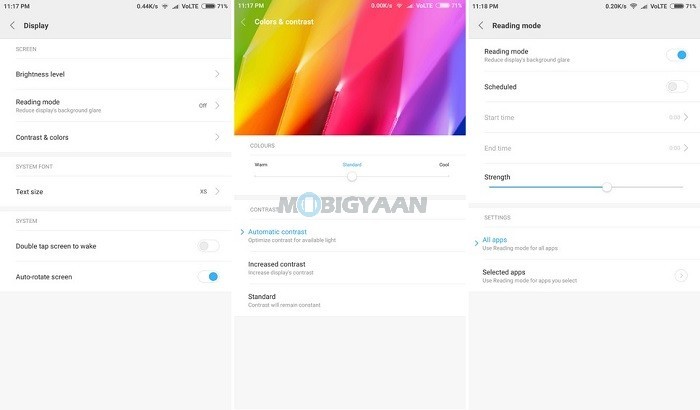
Software & User Interface
This is the first Xiaomi phone to offer the latest MIUI 8.5.4 software which is now based on the newer version of the Android Nougat i.e. version 7.1.1. Xiaomi’s most devices as of now haven’t got the Nougat update which clearly gives an advantage to the Mi Max due to the latest security patches. However, things are not as good as when you see the latest Android built MIUI 8.5. (1st May 2017).
The Android Nougat’s native features seem missing, the multi-window mode, and the quick switching of apps. Since the display is huge, the multi-window could have been a great add-on to the MIUI. Nevertheless, Xiaomi will soon announce the multi-window in its MIUI beta built making its way to the stable release.
The MIUI offers the usual quirks and perks you will find on most Xiaomi phones that include the infamous dual space, dual apps, and quick ball. You also get tons of themes from the MIUI theme app as well as a Mi Remote app to control your infrared devices.
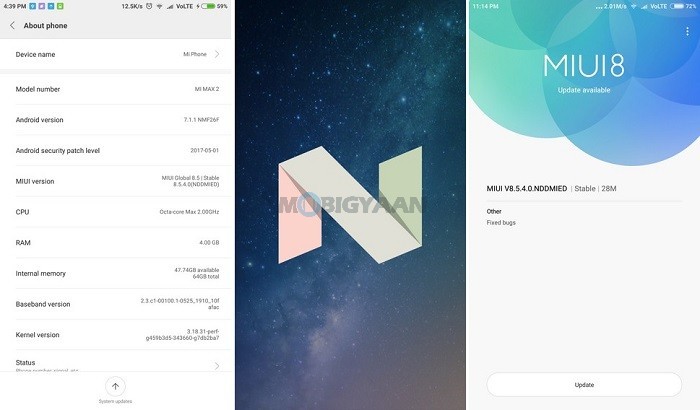
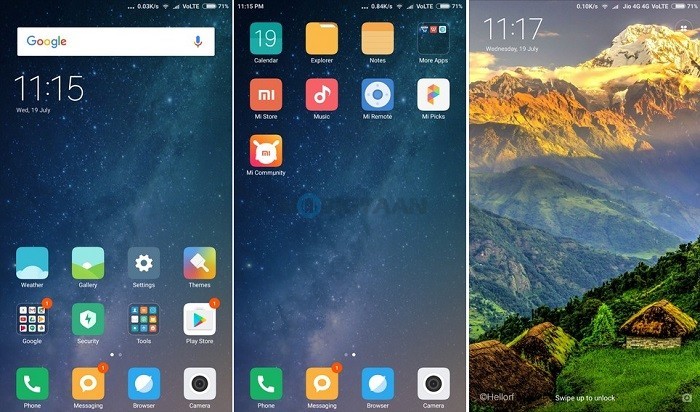
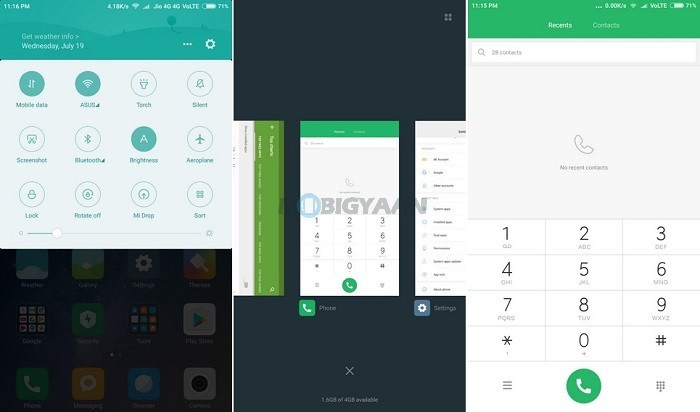
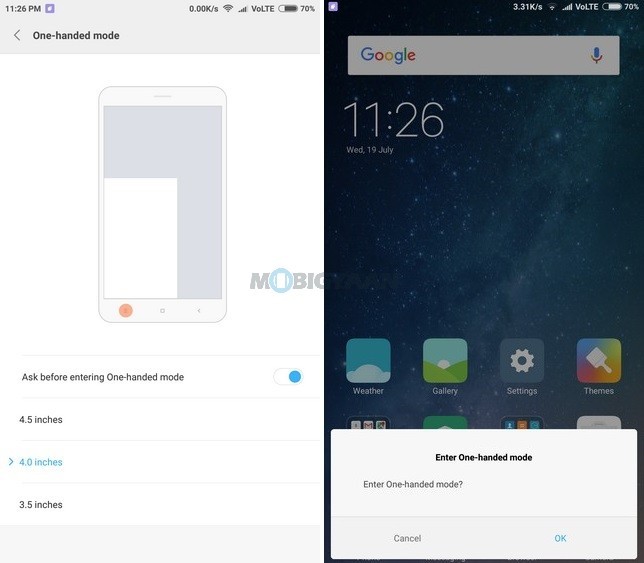
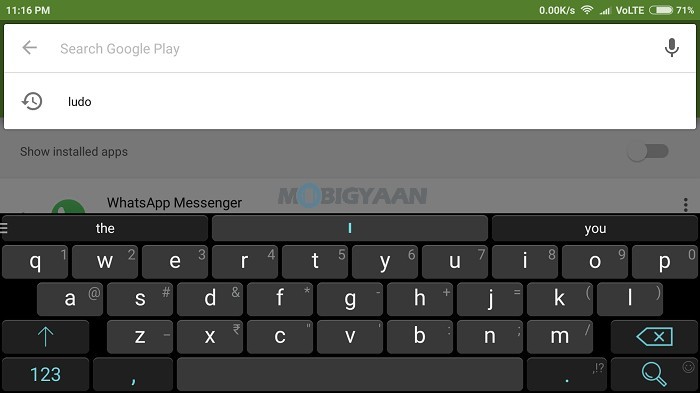
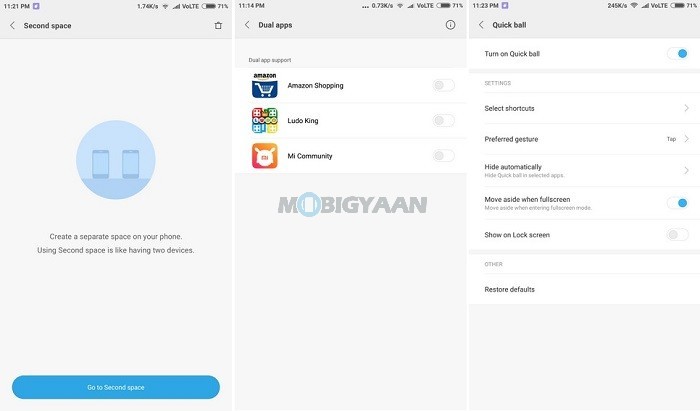
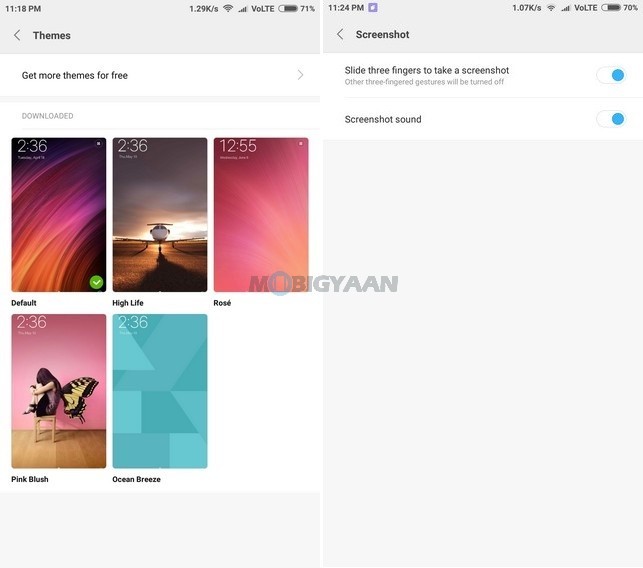
Fingerprint Scanner
The fingerprint scanner is placed at the back like usual. Most Xiaomi phones come with a fingerprint scanner on the back except the flagships that embeds the sensor on the Home button. You can register up to 5 fingerprints and lock apps using it. The fingerprint scanner is fast, unlocks the device quickly. People with smaller hands may find it difficult to reach the fingerprint scanner. I can place my pointer finger easily on the scanner. It doesn’t work with wet fingers.
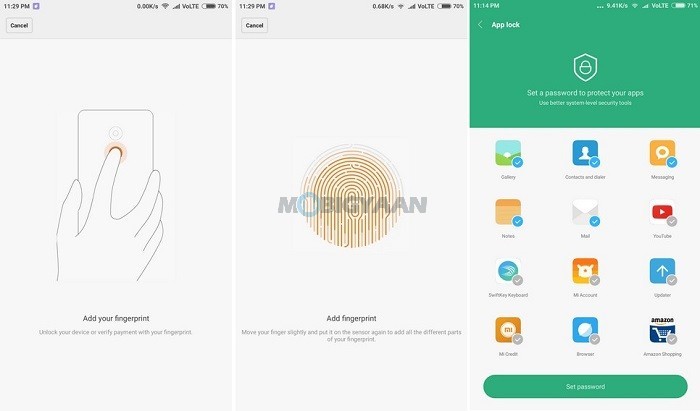
Hardware, Performance & Gaming
On the hardware side, the Mi Max 2 has now gone from hexa-core to octa-core. Although it’s a little underpowered, the battery performance has increased due to the power efficient CPU. It is powered by a Qualcomm Snapdragon 625 with 4 GB LPDDR3 RAM and 64 GB eMMC storage.
Earlier, the Mi Max offered a Snapdragon 650 which is much powerful than the Snapdragon 625, has a better score in the benchmarks even though it’s two core behind. The Snapdragon 625 consists of eight Cortex-A53 cores while the Snapdragon 650 has four Cortex-A53 cores and two powerful Cortex A-72 cores. The same is the case with the Redmi Note 4 and the Redmi Note 3.
The CPU is somehow degraded in terms of performance, however, upgraded in terms of energy efficiency. Nevertheless, the performance won’t be actually noticeable in the real World unless you run heavy CPU intensive apps.
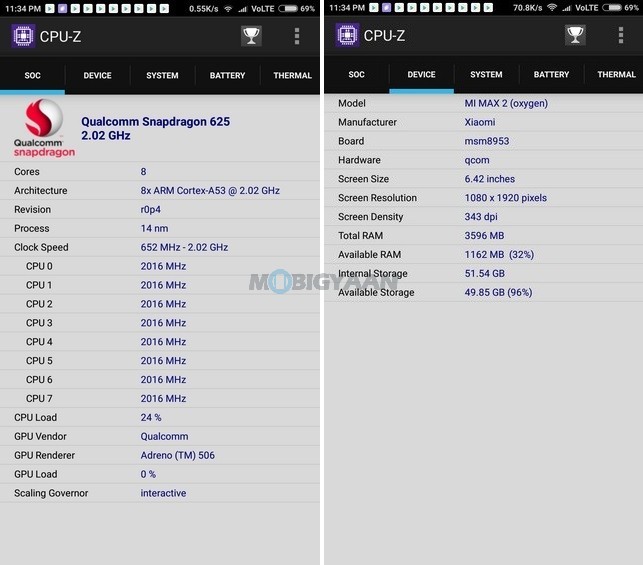
As for the benchmarks, the AnTuTu scored 62,575. Geekbench CPU gave a score of 860 points (single-core) and 4,133 points (multi core), and Geekbench GPU scored 3,216 points. The Quadrant Standard Edition scored 26,169 points.
AnTuTu Benchmark
- 62,575 points
Geekbench 4
- 860 points (single-core CPU)
- 4,133 points (multi-core CPU)
- 3,216 (GPU)
Quadrant Standard Edition
- 26,169 points
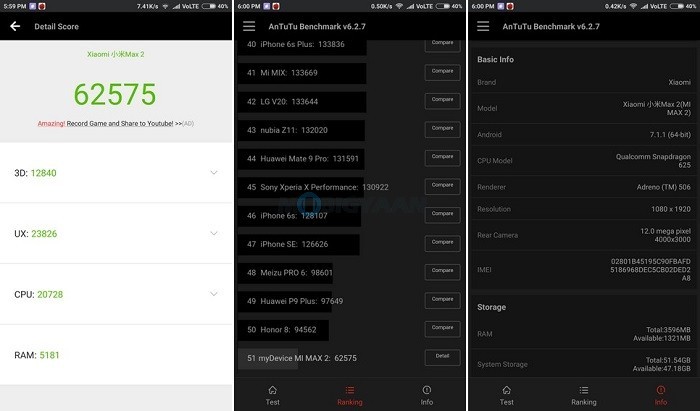
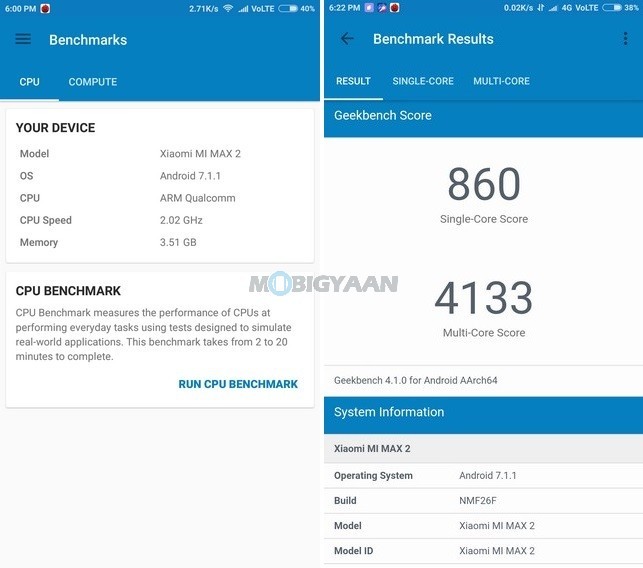
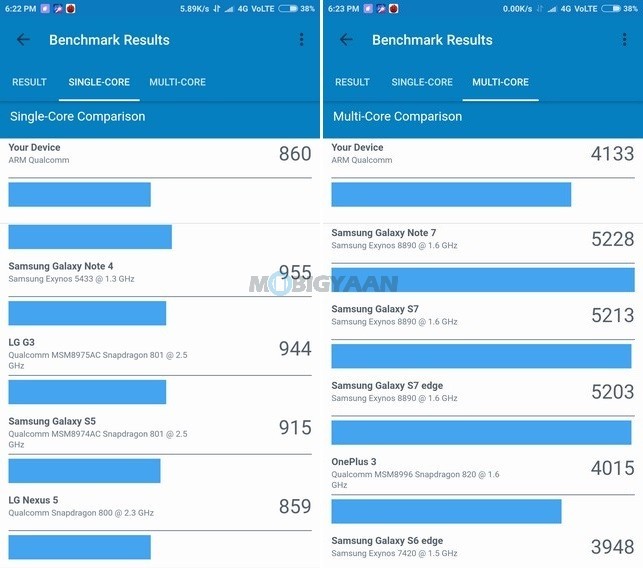
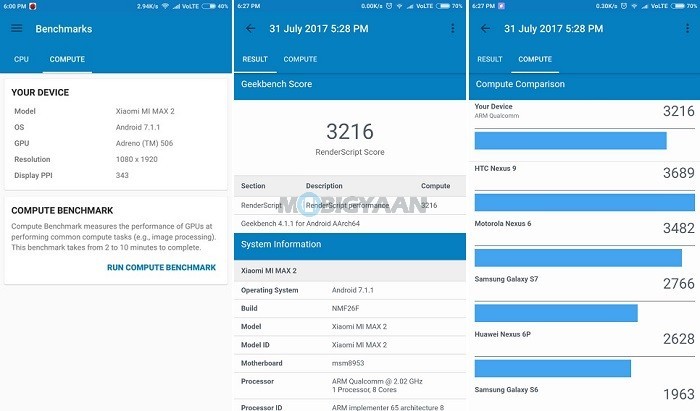
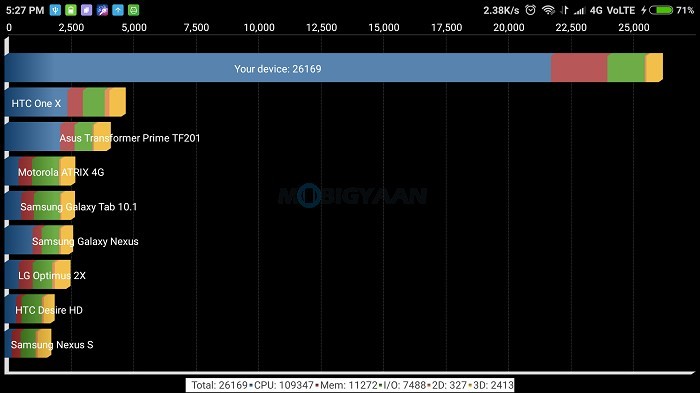
Since the specifications of the Mi Max 2 are identical to the Redmi Note 4, the gaming performance is very similar to it. Games like Angry Birds Evolution, Brick Blast Ball, Ludo King and Asphalt 8: Airborne runs quite well. Most mainstream games you can play without any issues. We have already played games like Modern Combat 5: Blackout, Dead Trigger 2, Diggy’s Adventure, and Angry Birds on the Redmi Note 4 and they all ran just fine with no lags. Expect similar gaming performance on the Mi Max 2. We found no heating issues with the device.
Games Tested on Xiaomi Mi Max 2:
- Angry Birds Evolution
- Brick Blast Ball
- Asphalt 8: Airborne
- Ludo King
Storage Performance
Unlike its older generation, the Mi Max 2 offers a doubled storage 64 GB in contrast to the 32 GB eMMC internal storage with given the option to expand the storage with a MicroSD. It’s not the high-end UFS storage that you see on the flagships, but it certainly sits in the midrange segment well for the price. Here are the storage benchmarks below.
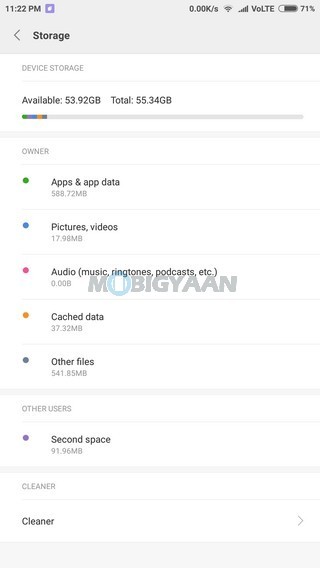
A1 SD Bench
- 217.98 MB/s (Read)
- 138.14 MB/s (Write)
AndroBench
- 270.77 MB/s (Sequential Read)
- 139.29 MB/s (Sequential Write)
- 38.77 MB/s (Random Read)
- 12.10 MB/s (Random Write)
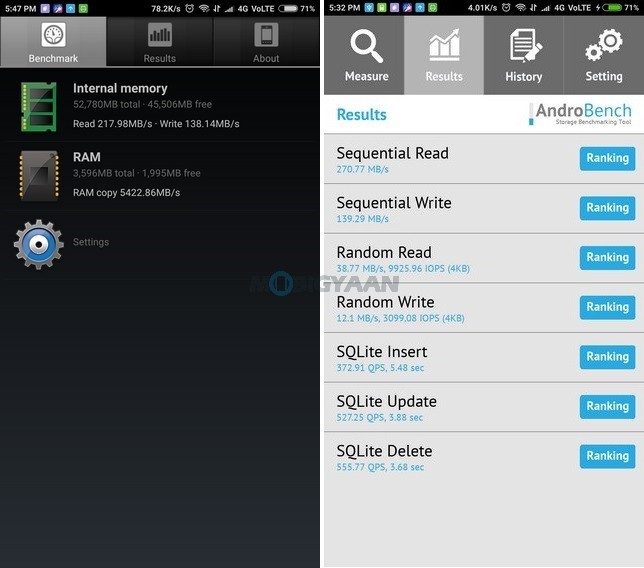
Cameras
According to our previous smartphones experience, the mid-range smartphones don’t really bother putting a good camera in it especially when the pricing is really tight. But with the Mi Max 2 case, things are great, the camera on the device exceptionally performs great.
The Mi Max 2 offers a 12 MP camera with Sony’s IMX386 image sensor. This is the same camera sensor you will see on the on the Xiaomi Mi 6 (yet to be launch in India) and the Honor 6X. Since both are dual camera phones, the end result is somewhat different but the image quality is quite similar.

Xiaomi Mi Max 2 Camera Specifications
- Camera: 12 MP f/2.2
- Image Sensor: Sony IMX386
- Optical Image Stabilization (OIS): N/A
- Rear Flash: dual-tone LED flash
- Features: Geo-tagging, Tap to Focus, HDR, Panorama, Manual, Straighten, Beautify, HTT (Night Mode), Scene, Tilt-shift, Audio, Color Filters, Burst Shot
- Video Recording: 4K video @30fps, slow motion 1080p @120fps
- Front Camera: 5 MP f/2.0
- Video Recording: 1080p video @30fps
- Front Flash: N/A
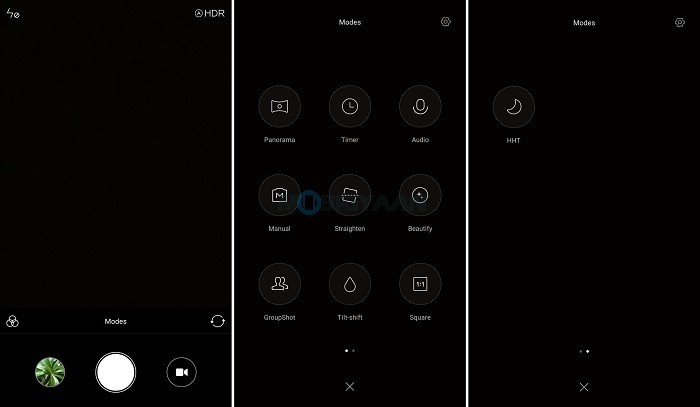
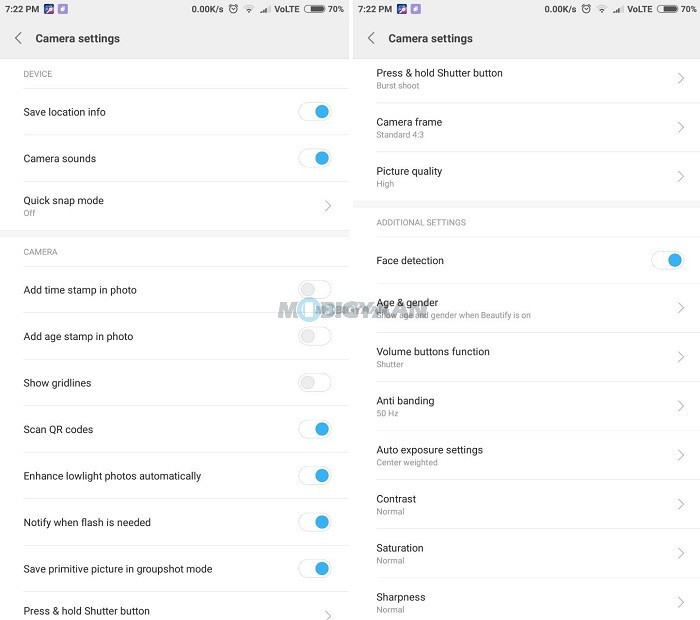
We took some shots to see how is the camera performs. The images can be taken quickly, the shutter speed is fast, the details are sharp. The camera has a simple interface, equipped with various camera features but lacks as much features we saw on the Honor 6X.
Impressively, the camera result is above average and better than expected. The camera is improved from its past generation. Furthermore, it also records 4K video, but there’s no optical image stabilization available.
About its front selfie camera, it’s about average. It comes with a 5 MP front camera without flash. The camera is only good for taking selfies in the bright daylight. It doesn’t even capture groupfies (group selfies) since the front camera is not wide angle (85 degrees).
Xiaomi Mi Max 2 Camera Samples
Battery Life
Xiaomi Mi Max 2 comes with a massive 5,300 mAh battery which is ideal for a multimedia device. Xiaomi managed to increase the battery capacity even by making the phone slimmer than its previous generation. Usually, we see power banks with a 5,000 mAh capacity and the Mi Max is no doubt a power bank in itself. It does offer reverse charging to use it as a power bank.
I was surprised to see the 12-hour screen on time and it lasted about 4 days. I haven’t seen any phone that lasts about 4 days with SOT 12+ hours. That said, the Xiaomi has done a great job optimizing the battery life, the Mi Max 2 is certainly a winner in the battery segment. On average the battery (with moderate usage) can run easily between 2 and 3 days on a single charge.
Since the battery capacity is higher, charging takes time. It supports Qualcomm Quick Charge 3.0 technology to charge the battery faster. In an hour, you can charge the device up to 68% and it takes about 2 hours to charge the battery to the maximum.
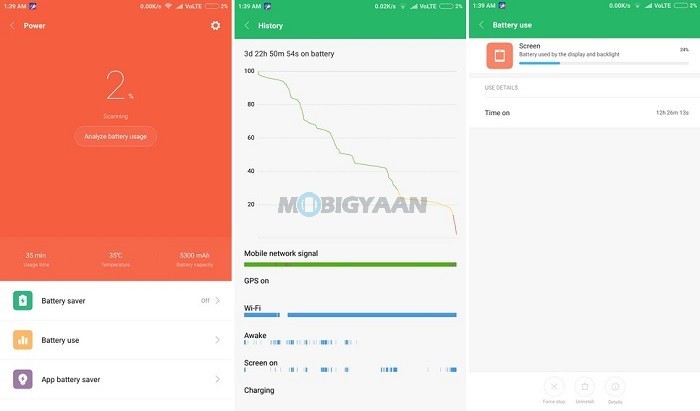
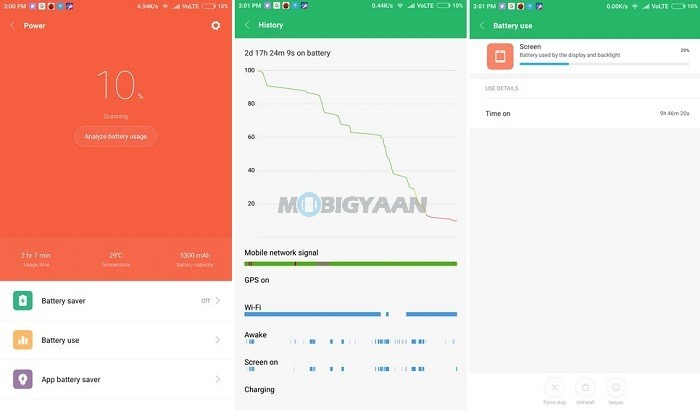
Xiaomi Mi Max 2 Battery Test Results
[table id=109 responsive=flip /]
Verdict
Large smartphones aren’t meant for everyone. The problems with the phablets are, they aren’t easier to carry in the hands, they can’t be able to fit inside your small pockets, feels bulkier, and so on. That said, in a nutshell, if you love big screen smartphones, want excellent battery life, and have the ₹17,000 budget to spend, Xiaomi Mi Max 2 is worthy in our opinion. If you have a lesser budget, the first generation Mi Max is still the right pick.
Competitors
- Lenovo Phab2 Plus – ₹14,999
- Xiaomi Mi Max – ₹14,999
Strength
- Solid Build, Curved Edges
- Large Screen Offers Great Multimedia Experience
- Excellent Battery Life
- Impressive Call Quality
- Stereo Speakers
- Decent Rear Camera
- IR Blaster & USB Type-C
- Fast Charging Support (Qualcomm Quick Charge 3.0)
Weakness
- Average Front Camera












